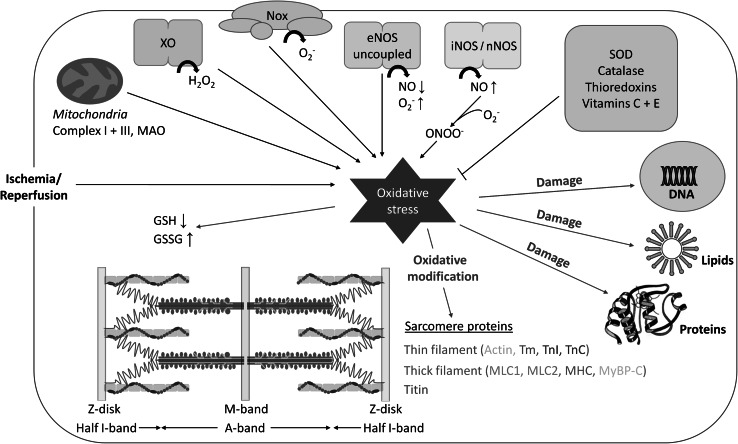Fig. 1.
Schematic overview of important sources and targets of oxidative stress, as well as protectors against it, in striated muscle cells. Sources of reactive oxygen/nitrogen species include xanthine oxidase (XO), NADPH oxidases (Nox), uncoupled endothelial nitric oxide synthase (eNOS), inducible nitric oxide synthase (iNOS), neuronal nitric oxide synthase (nNOS), and mitochondrial factors such as complex I or III and monoamine oxidase (MAO). Antioxidant enzymes include superoxide dismutase (SOD), catalase, and thioredoxins, whereas non-enzymatic antioxidants are vitamins C and E. Oxidative stress damages DNA, lipids, and proteins, and among others, causes oxidation of myofilament proteins and alterations to the ratio between oxidized (GSSG) and reduced forms (GSH) of glutathione. Among the sarcomere proteins biochemically modified by oxidative stress are actin, tropomyosin (Tm), troponin I (TnI) and troponin C (TnC), myosin light chains 1 and 2 (MLC1 and MLC2), myosin heavy chain (MHC), myosin-binding protein-C (MyBP-C), and titin

